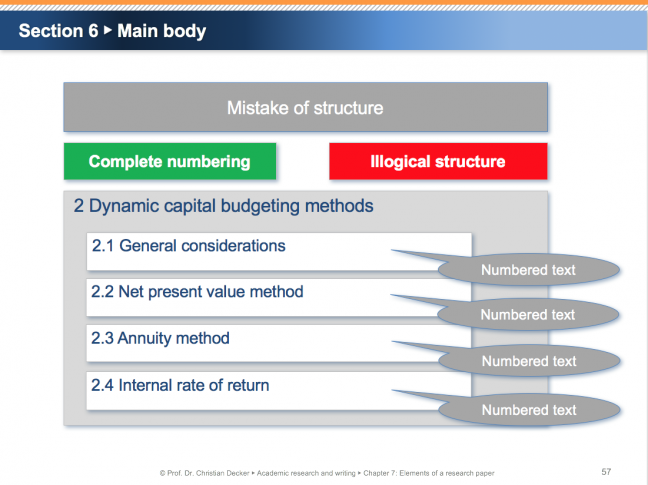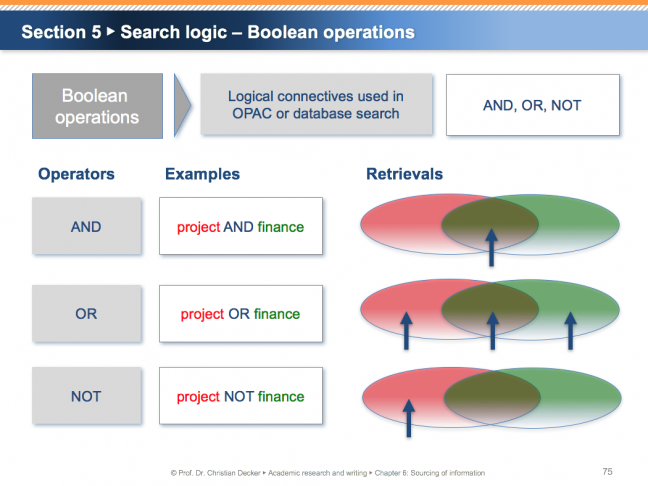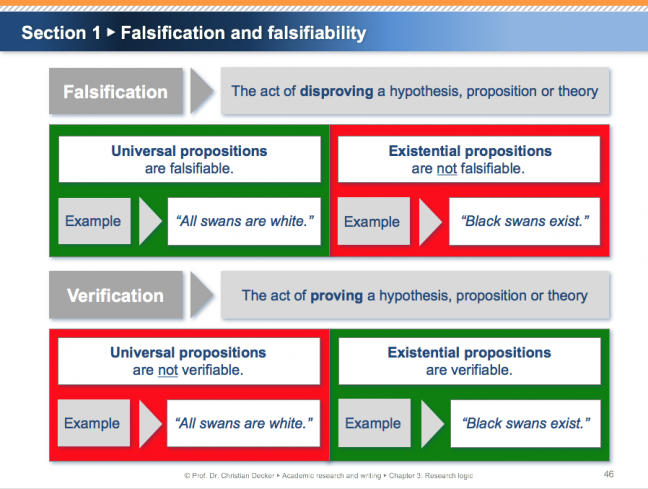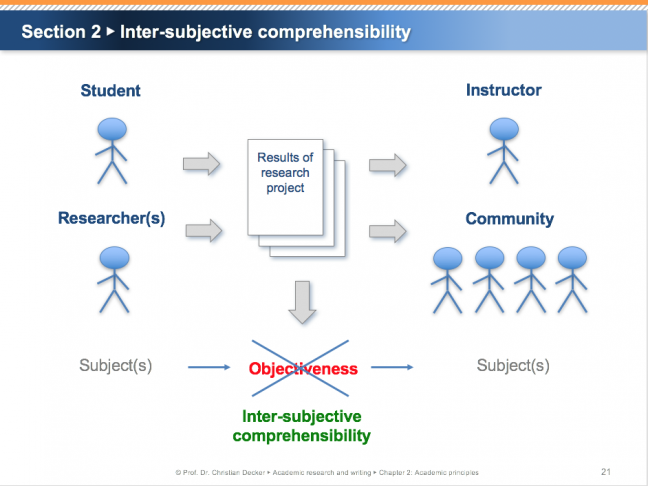The structural elements to be applied in academic writing depend on the nature of the research project. Manifestations of academic writing range from student assignments and term papers to doctoral theses and other forms of complex research documentations. Some structural elements are always used in research papers. Other structural elements are optionally or selectively used. Technically, research papers can be divided into four sections: addments, directories, main body and annex. Each of these sections contains different structural elements that have to be applied in accordance with the formal instructions laid out in academic style guides. Although the applicable rules may vary according to the field of research, some commonalities for structural elements exist. These commonalities may be based on logical considerations or result from traditional academic conventions. Important elements to be discussed in this chapter are cover page, abstract, outline, directories, main body, bibliography and list of references, glossary and appendix, declaration of originality as well as data carrier and electronic storage media.
Link to e-learning videos: Overview of chapter 7






